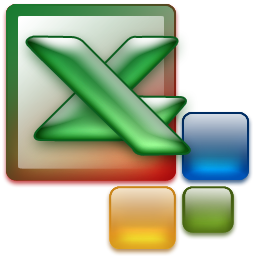
Microsoft Excel (full name Microsoft Office Excel) is a spreadsheet application written and distributed by Microsoft for Microsoft Windows and Mac OS X. It features calculation, graphing tools, pivot tables and a macro programming language called VBA (Visual Basic for Applications). It has been a very widely applied spreadsheet for these platforms, especially since version 5 in 1993. Excel forms part of Microsoft Office. The current versions are Microsoft Office Excel 2010 for Windows and 2008 for Mac.
Exercise 1
 | |||||
| |||||

| |||||

 | |||||
TabLes :
Office 2010 product guide
Interactive translation from Excel 2003 menus to 2007
Standard file-extensions
| Format Extension | Main spreadsheet format which holds data in worksheets, charts, and macros |
| Add-in (VBA) .xla | Adds custom functionality; written in VBA |
| Toolbar .xlb | The file extension where Microsoft Excel custom toolbar settings are stored. |
| Chart .xlc | A chart created with data from a Microsoft Excel spreadsheet that only saves the chart. To save the chart and spreadsheet save as .XLS. >XLC is not supported in Excel 2007. |
| Dialog .xld | Used in older versions of Excel. |
| Archive .xlk | A backup of an Excel Spreadsheet |
| Add-in (DLL) .xll | Adds custom functionality; written in C++/C, Visual Basic, Fortran, etc. and compiled in to a special dynamic-link library |
| Macro .xlm | A macro is created by the user or pre-installed with Excel. |
External links
Microsoft Excel official siteOffice 2010 product guide
Interactive translation from Excel 2003 menus to 2007


No comments:
Post a Comment